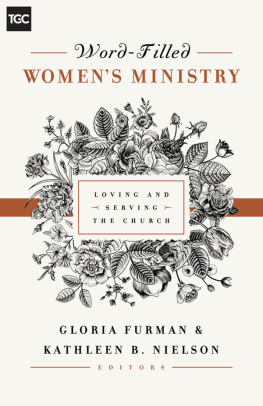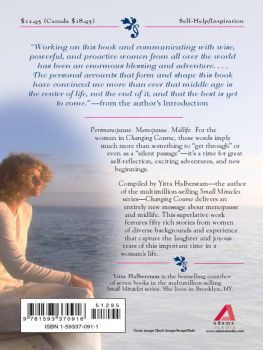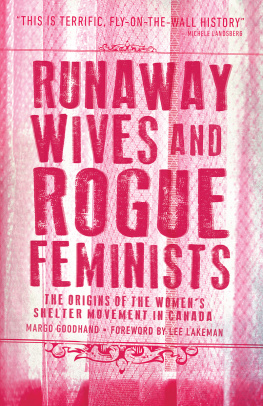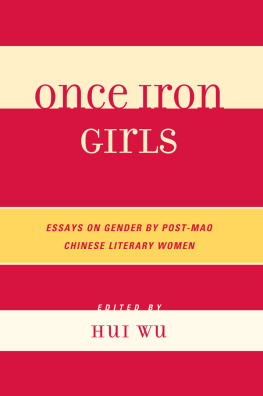Published in 2000 by
Routledge
Taylor & Francis Group
711 Third Avenue
New York, NY 10017
Published in Great Britain by
Routledge
Taylor & Francis Group
2 Park Square, Milton Park
Abingdon, Oxon OX14 4RN
Routledge is an imprint of the Taylor & Francis Group, an informa business
Copyright 2000 by Routledge
All rights reserved. No part of this book may be reprinted or reproduced or utilized in any form or by any electronic, mechanical, or other means, now known or hereafter invented, including photocopying and recording or in any information storage or retrieval system, without permission in writing from the publishers.
Library of Congress Cataloging-in-Publication Data
Wise women: reflections of teachers at midlife Phyllis R. Freeman and Jan Zlotnik Schmidt, editors,
p. cm.
Includes bibliographical references.
ISBN 0-415-92302-6 (hard). ISBN 0-415-92303-4 (pbk.)
1. Women teachersUnited StatesAttitudes. 2. Middle ageUnited States. 3. Feminism and educationUnited States. I. Freeman, Phyllis R. II. Schmidt, Jan Zlotnik.
LB2837.W58 2000 | 99-42363 |
371.1'0082dc21dc21 | CIP |
VIRAGO, ELDER, WITCH, HEALER, CRONE, HAG, OLDER WOMAN, LA LOCA, THE CRAZY WOMAN, TRIBAL STORYTELLER, TEACHER
We began work on this volume because we were both turning fifty, confronted by these characterizations and stereotypes of menopausal women. We asked ourselves if these words in any way named us. Were we doomed to be hags, witches, or crones? How were we going to face the issues confronting us as middle-aged women? Would we be able to deny the messages that the culture was sending us about our aging bodies? And how did our changing senses of identity have an impact on our own personae and stances as teachers in the academy?
We decided to begin our progression toward our fiftieth birthdays by scheduling lunches as a kind of ritual gathering, as a way to discuss how we would mark this milestone year in our lives. We did not wish the year to pass without considering its importance, without marking it in some way, without thinking about how we would spend the next fifty years of our lives! As we began our conversations, we also were acutely aware that because the baby boomers were nearing fifty, womens middle passage, after years of neglect, was suddenly the subject of intense scholarly scrutiny. We noticed, however, that despite an array of volumes focusing on either menopause or on midlife for women, no single work anthologized autobiographical, reflective narratives of midlife teachers. We wondered if we were vastly different teachers at fifty than we were at thirty. We wondered what distinguished our teaching practicehow had we changed? We realized that we were entering uncharted territory. Thus the idea of this volume took shape. We gathered women in midlife from different disciplines, stages of their careers, institutions, and regions of the country to join us in this midlife journey. We read drafts of their essays, held e-mail conversations with many members of the group, and also asked the contributors to comment on each others work. We wanted the volume to be a collaboration. As editors, therefore, we decided not to create a scholarly essay assessing patterns of experience of midlife, but, instead, to comment briefly on noteworthy motifs in the introduction and then let the essays stand unmediated by our scholarly perspectives. We did not want to stand apart from the contributors; instead, we wanted to value the reflective narratives of the participants. We agreed with Margaret Lock (1993), who asserts that we cannot measure subjective experiences but must narrate them(xxxix).
We hope that we have created a work that invites readers to participate and to engage in autobiographical reflection and writing. In this spirit, each section is prefaced by evocative quotations. Finally, we have incorporated a selected bibliography of relevant research on the menopause and midlife transitions for women and on autobiographical writing in the hope that readers will be encouraged to continue exploring their midlife passages. In this way we hope to create a communal vision of women living, working, and teaching in the academy.
This book reflects much of what we have learned and received in a quarter century of teaching. Therefore, we have a circle of teachers, students, and friends in and out of the classroom to thank:
We thank the administration of SUNY New Paltz for the gifts of our separate sabbatical leaves when first the concept and then the work of this book took shape. To Ilene Kalish, Krister Swartz, and Shea Settimi at Routledge for their faith and expert support of this project, we send our sincere thanks. To the memory of our colleague and dear friend, poet Carley Rees Bogarad, our continuing recognition of how much she has taught us both about the teaching life.
Phyllis wishes to thank the following people:
To more than twenty-five years of undergraduate and graduate students in psychology, especially Julian Keenan and Michelle Warfield, my appreciation for helping me become the person and the teacher I am. To my parents, Helen and Mel Freeman, my first teachers, my continuing love and respect. To my nieces Lori and Lani, my hope that they both will remain feisty girls. To my old friend, George S. Lechner, for our many conversations about reflective teaching and charis, my deep appreciation for the gifts of his knowledge and his friendship. And most especially to my husband, David Krikun my great gratitude and love for twenty-three years of being the wind beneath my wings.
Jan wishes to thank the following people:
I wish to acknowledge the students whom I have taught in both undergraduate and graduate writing coursestheir words have nourished me and enriched my life; I hear their voices in my dreams. And I wish to thank those whose friendship has nourished me throughout the years: Barbara and Michael Adams, Arthur Cash, Judith Dorney, Carole Levin, Patti Phillips, Deborah Roth, and Robert and Kappa Waugh. Most of all I thank Mary Gordon, my trusted friend, reader, and critic of twenty-five years, and my familyMae and Harold Zlotnik; Marilyn Zlotnik, Peter Hultberg, Samantha and Gabriel; Adrienne and George Todd and Mechelle, Jared, and Dylan; Gayle Guistizia, Segev, and Yotam. Family means so much to me. Finally, I thank my husband, Philip Schmidt, and my son, Reed Schmidt, for their unending gifts of love. Their love has sustained me.
We hope that this anthology returns, in small part, some of the pleasures that we have received from our relationships with these special people.








